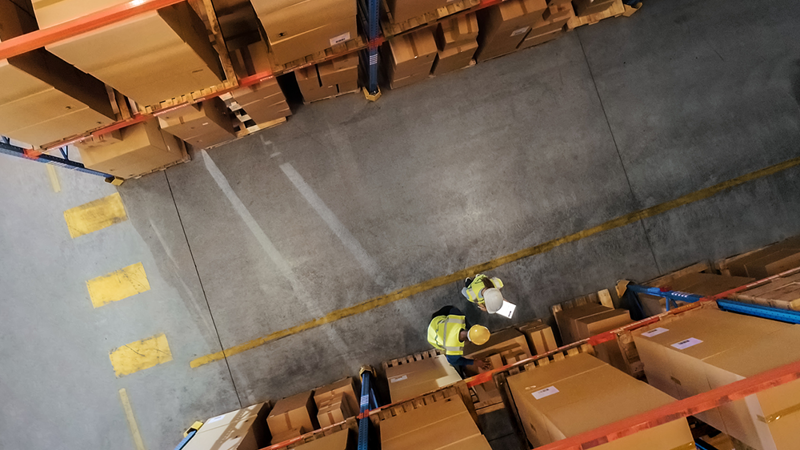Shipment visibility is a major buzzword in supply chain today. Nowhere is this more important than time-sensitive and complex direct-to-consumer (D2C) cross-border ecommerce.
Simple visibility – knowing where a shipment is and when it will arrive – is not enough. It needs to be actionable for freight forwarders, customs brokers, and shippers to anticipate key milestones, plan resourcing needs, and identify potential disruptions before they occur.
The international ecommerce supply chain involves multiple steps and functions, often involving different supply chain partners. These steps include first-mile pickup, data validation and pre-screening, package labeling, consolidation, customs clearance, deconsolidation, and final-mile delivery. Across these steps, processing is performed by the shipper and by origin and destination country resources or partners. And since these are D2C ecommerce orders, the consumer expects to know where their order is and when it will arrive at their doorstep.
Actionable visibility for all functions, partners, and the shipper through every step of a cross-border ecommerce supply chain is critical for the successful delivery of an ecommerce order - from origin country dock to destination country consumer doorstep.
Four steps in cross-border ecommerce where actionable visibility ensures successful D2C delivery
There are four key milestones in the cross-border ecommerce journey where a lack of visibility, and more importantly the inability to act in a timely manner, can lead to shipment delays, or worse, cancelled orders that can ultimately cost you customers.
1) Origin country order initiation
Without visibility the forwarder won’t know when an order requires pick up or when it will arrive, to anticipate workload. Using technology, you can automate the triggering of orders with close integration between the shipper and the depot handling origin country processing. Making full order details readily available will not only give you visibility on what is coming and when, but will allow for pre-processing to begin, including data validation, customs pre-screening, and transportation space booking.
In addition, notifications can be triggered for milestones like order received, scanned at origin, transport booked, and order departed, so the shipper and other functions or partners can track progress and anticipate next steps.
2) Air or sea container or pallet move
Without actionable visibility at this step, the order may not get onto the outbound transport from the origin country, or it may sit on the dock in the destination country. This can result in a customer-losing shipment delay and margin-killing storage fees.
Regardless of the mode, technology can empower you with tracking events from the shipping line or airline for booking received, freight loaded, shipment departed, shipment landed, and freight available at terminal. These should be captured and communicated to all parties involved. They can even be communicated back to the consumer to proactively track and trace shipment progress reducing inbound customer service requests.
3) Customs submissions and responses
The destination country warehouse needs to know if an order can be released. Prematurely releasing an order without proper clearance can result in fines or more severe penalties. Without visibility, customs or security exceptions can’t be handled easily, quickly, or proactively.
Order data validation and pre-clearance lets the shipper and customs broker proactively handle potential issues before they put the shipment in jeopardy.
There is a lot of back-and-forth communication during the customs and security clearance process. The ability to drill down to the customs clearance messaging for individual orders within the shipment and to sort and search shipments based on the customs statuses (such as held for inspection or x-ray, and cleared for release), allows for easier exception handling. In addition, notifications for those status changes can be pushed out for immediate action.
4) Final-mile delivery
By the time an international ecommerce order arrives in the destination country, the consumer will have likely tracked the progress of their order online several times. With visibility, they will know that delivery is imminent and can plan to receive the shipment or send it to an alternative pick-up location.
Capturing and generating notifications for last-mile delivery milestones (such as package received by carrier, in transit to destination, out for delivery, and delivered), is important to monitor progress to the customer's doorstep. The ability to drill down to an individual order by shipper and per shipment provides the shipper with the visibility they need to handle inbound “where is my package” requests by phone, email, or online chat. It will also let them know when the order has been successfully delivered.
Go beyond visibility with CargoWise International Ecommerce
CargoWise International Ecommerce maintains a single source of data from the shipper dock to the consumer doorstep. All functions and parties can access order data at any time through the Shipper Portal, Origin Depot Portal, and Destination Portal with configurable notifications throughout the cross-border ecommerce supply chain.
This provides actionable visibility for proactive transport bookings, fast customs exception handling, and careful resource planning resulting in fewer delayed shipments, fewer customs impediments, and more orders arriving on time at the consumer doorstep - for happier customers and customers’ customers.
Read more about how CargoWise International Ecommerce delivers visibility across the entire cross-border ecommerce journey.
Download our latest eBook to explore how integrating international ecommerce capabilities can boost customer sales, strengthen customer relationships, and make them more profitable and enduring.
Pongámonos en contacto
Descubra cómo CargoWise puede ayudarlo a destrabar la cadena de suministro.
